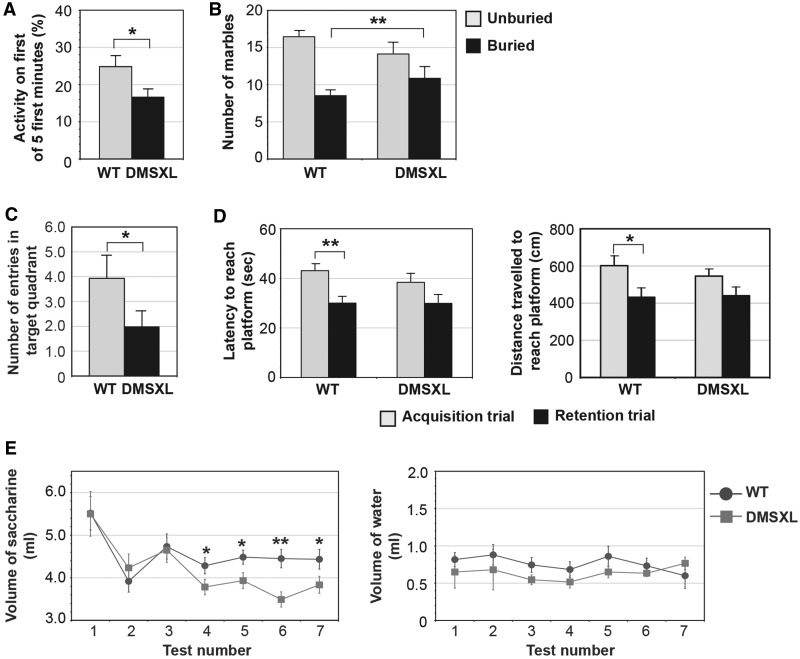Figure 2.
DMSXL exhibit novelty-induced inhibition, anxiety, spatial and working memory impairment and anhedonia. (A) Assessment of novelty-induced inhibition in DMSXL homozygotes (n = 16) and age-matched control mice (n = 16). The graph represents the percentage of the number of rearings (±SEM) in the first minute out of the first 5 min spent in the first open-field session. (B) Assessment of mouse anxiety levels by the marble-burying test. The graph represents the average number of marbles (±SEM) unburied and buried by DMSXL (n = 15) and wild-type mice (n = 15). The DMSXL line shows a significant shift towards a higher number of buried marbles (P = 0.0087, Fisher’s exact test). (C) Spatial memory assessment by the Morris water maze test. The graph represents the number of entries in the target quadrant (±SEM) during the probe trial, for DMSXL (n = 15) and wild-type (n = 15) mice. (D) Working memory assessment by the Morris water maze test. The graphs represent the average time and distance travelled (±SEM) to reach the platform in acquisition and retention trials for both genotypes (n = 15 per genotype). (E) Saccharine consumption test for anhedonia. The graph on the left represents the average volume of saccharine solution (±SEM) drank by DMSXL homozygotes (n = 12) and wild-type control mice (n = 12). The volume of water consumed once saccharine became available did not differ between the two genotypes (graph on the right). *P < 0.05; **P < 0.01. WT = wild-type.

